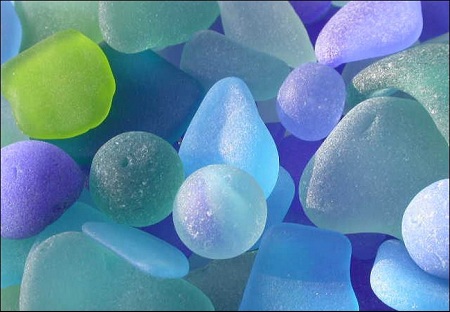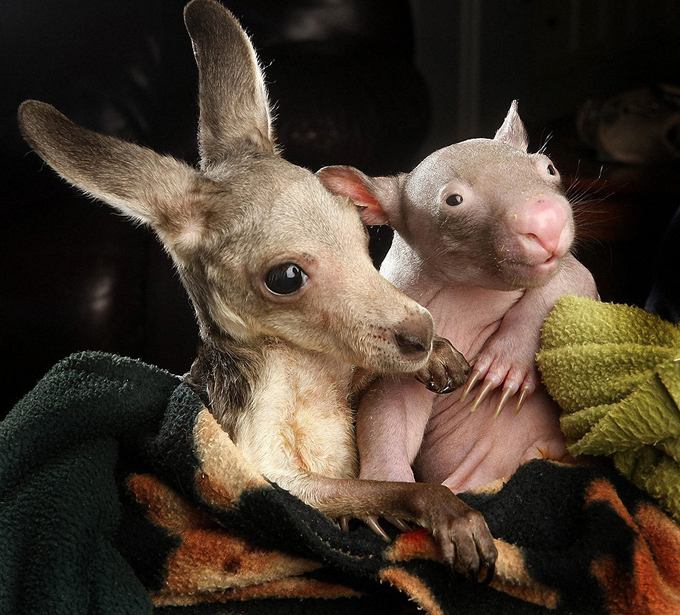
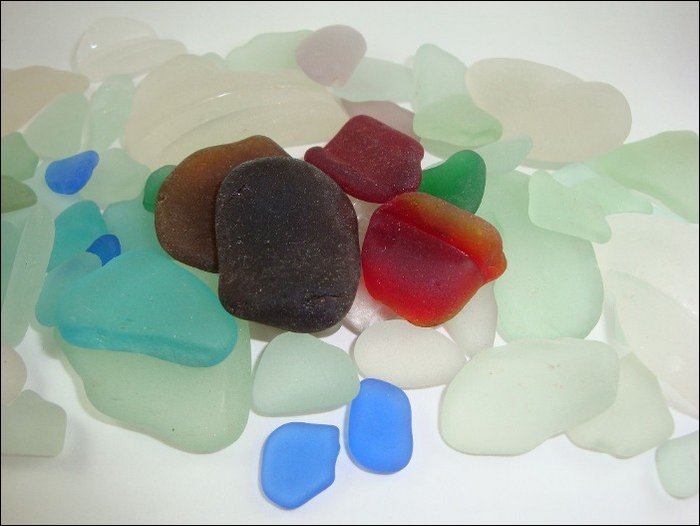

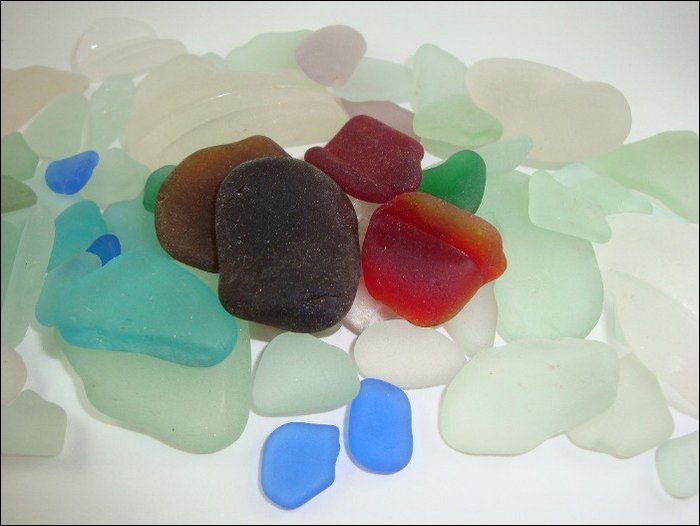
Beach glass, as it is called on inland waterways such as Chesapeake Bay and the Great Lakes, is similar to sea glass, but may be less weathered in the absence of wave rigor and oceanic saline content. Beach glass from inland regions often has prominently embossed designs or letters on it, which can make tracing its origin less challenging. The outer surface of beach glass shards may also be texturally varied, with one side frosty and the other shiny. This is most likely because they are pieces broken off from larger glass objects which are themselves still embedded in mud, silt or clay, slowly being exposed by wave action and erosion.
Red sea glass is the rarest colour. It is so rare because it was only made for a small period in time, and gold was one of its ingredients. Sea glass is getting less common because fewer things are made out of glass today. Many years ago most containers were made of glass – medicine, poison, drinks, water. Sea glass is most often found at the top of the shoreline. Before keeping, make sure that the edges are soft and well-worn, if not, they’re not actually sea glass, just glass.


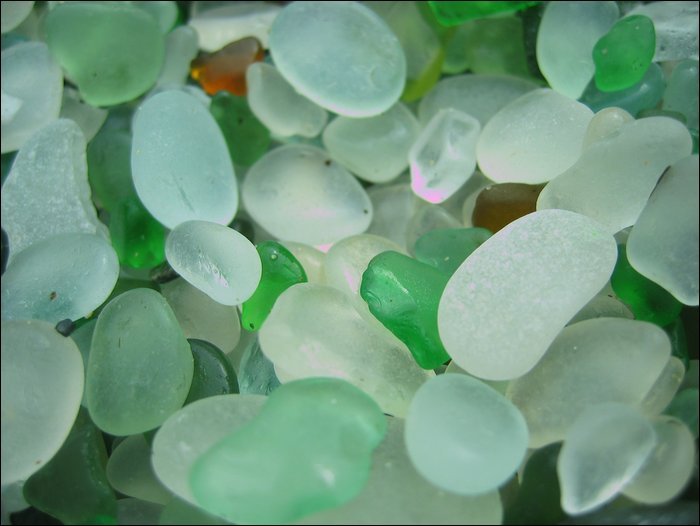


Authentic sea and beach glass is becoming harder and harder to find for a variety of reasons: there are more people searching for it; glass items have been replaced by plastics; and littering is discouraged.Some artisans and crafters have taken to tumbling less-than-stellar pieces of sea glass shards to create what is called “twice-tossed” glass. Others rely on artificial sea glass, produced to meet craft demand at a cheaper price and in a wider range of colors, which is also often processed using a rock tumbler. Such glass is chunkier than most true sea glass, lacks its romantic provenance, and differs in many technical ways, e.g. long-term exposure to water conditions creates an etched surface on the glass that cannot be duplicated artificially).For many professional sea glass collectors, authors, artisans, and retailers, the main issue is honesty regarding the source of glass. While some prefer the term “twice tossed” or “craft glass” for inauthentic or artificial products, this usage is by no means universal.
Information and image sources: 1 2




